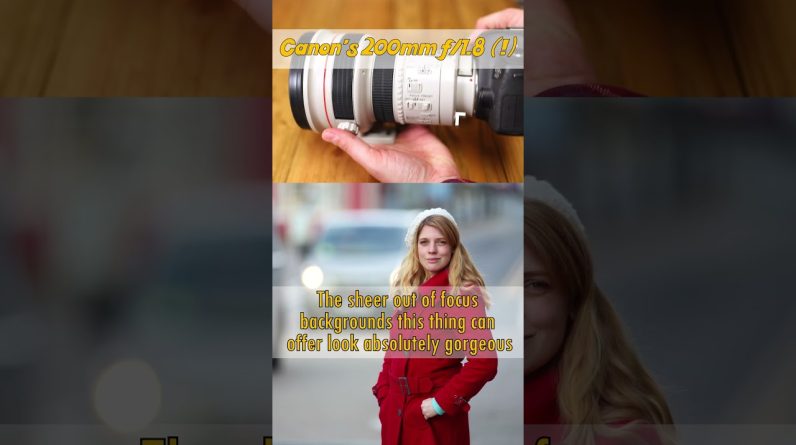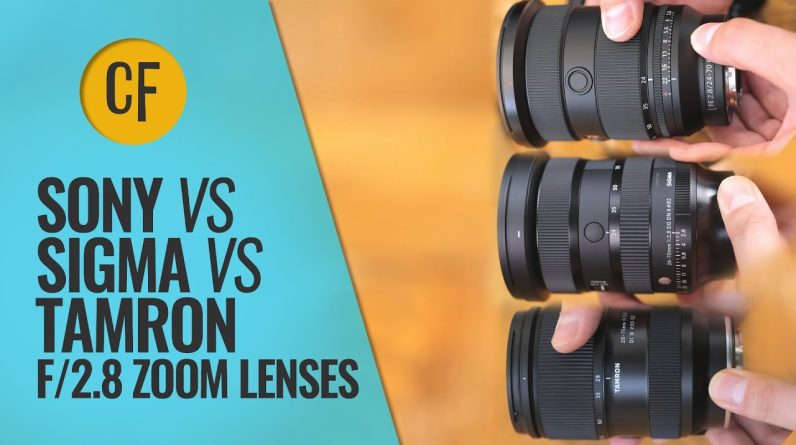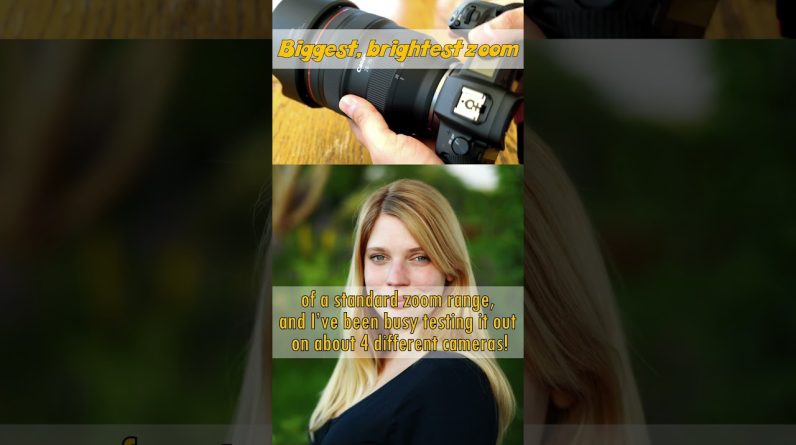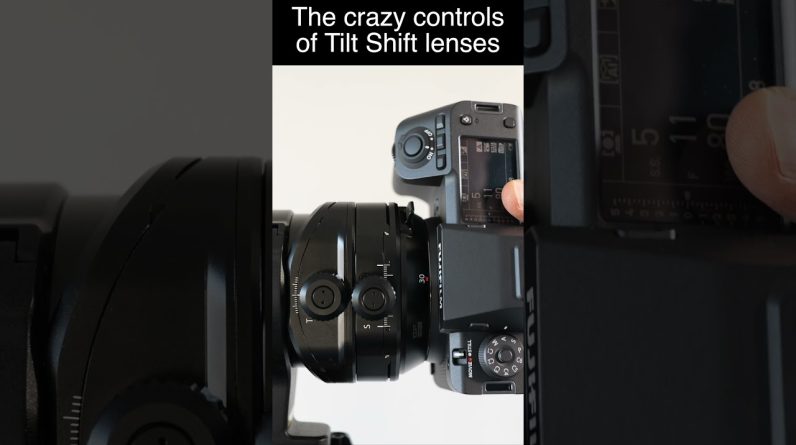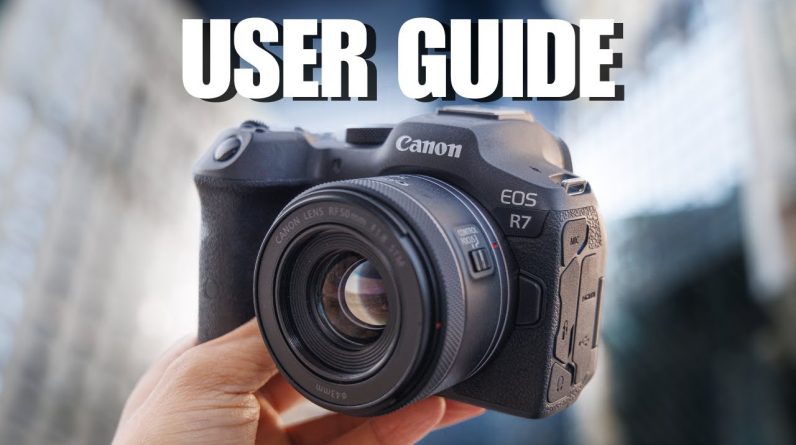[Music] Hi I'm Dustin Abbott Fuji's new 40 Megapixel sensor and some of their new Cameras including my xh2 has been a Wrecking ball in the sense like no Sensor I've ever seen before to the Older catalog of a company's Lenses I've reviewed a lot of Transitions to ever higher resolution Points but nothing that quite equates to This and that you have to understand That for this kind of resolution on that Small of a sensor it's the equivalent of Over 90 megapixels on a full-frame Camera that camera doesn't exist at this Point in fact that's 50% higher than the Highest resolution full-frame cameras at The moment so obviously this is a Massive amount of resolution and as a Byproduct it is really killing the Overall look of some lenses that people Initially thought of at lower resolution Points as being really really sharp Lenses and then as the resolution has Creeped up from 16 megapixels to 24 Megapixels to 26 megapixels and now 40 These lenses are looking worse and worse I've been spending some time with some Of the Main Stays of the Fuji catalog Including the kit lens 18 to 55 mm f2.8 To F4 ois the 16 to 55 mmm f2.8 premium Lens in the class and then also a newer Contender from a third party which Didn't exist a few years ago and that is
The Sigma 18 to 50 mm f2.8 so the Question is is are any of these lenses Equipped to handle this high resolution Sensor I'm going to give you a and I've Been spending a lot of time doing all of These comparisons really trying to Deep Dive in both chart tests but then also Real world scenarios trying to determine Which of these is your best bank for Your buck at this point if you're Considering ever upgrading to the 40 Megapixel uh resolution point on some Camera so to give you an idea of price This is MSRP prices in the US the sigma Is $549 the1 to 55 mm is 699 us though there is an asteris there And that it can be had in a kit if You're happen to buy it with a camera Body for as little as $400 and anytime you have a kit lens Means that there's going to be a fairly Robust used market for them as well so That Rec represents maybe the highest Price point probably more than what most People ended up paying in real world Actual usage the most expensive guy here Is the 16 to 55 mm and it's going to Come in at a whopping $1,200 us so I'm Going to spend a couple of minutes with Each one of these lenses kind of Breaking down the primary strengths and Weaknesses of build and design for the Sign
Obviously the negative here is that it Does have the smallest Zoom range it has Eight less mm of Zoom range on the Telephoto in compared to the 18 to 55 And of course it has an overall 7 mm Less compared to the 1655 not only Losing that 5 mm on the telephoto wi but Probably even more important the 16 to 55 mm goes 2 mm wider on the wide end Which is going to be really useful in a Lot of situations and again on a higher Resolution body you can always crop in To get more zoom but what you can't do Is crop wider so while this has the Smallest Zoom range it is also the Smallest of the lenses in terms of the Dimensions it's a little bit narrower And it's a hair longer than the 18 to 55 Mm you zoom the lens is out however and That Advantage disappears and the 18 to 55 is actually a little bit longer big Difference here though is is the weight The sigma weighs in at 285 G that's 25 G Less than the 18 55 but whopping 370 G Less than the 16 to 55 mm now the sigma It kind of splits the difference between These two other lenses in that it does Have a gasket at the lens mount but it Has no internal seals the 18-55 no weather resistance at all and The uh 16 to 55 has full weather Resistance the sigma lacks an aperture Ring something that is pretty much a Standard on Fuji lenses both of the f
Fuji versions have an apt ring of some Kind the as far as the feel of the lens The sigma feels Tighter and more modern You know it's even simple things like The Zoom action just feels more refined Than what it does on either actually of These other zooms it just feels and of Course it is tighter this is a fairly New lens compared to some lenses that Have been you know probably in Fuji's Review circuit sample circuit for a While and so they they feel a little bit Loose by comparison so maybe not Completely fair comparison but even if You take away the wear and The Tear just By the overall modern feel of the lens And the design the sigma feels a little Bit more contemporary it also has a Higher magnification level you can get Closer in focusing on actually both ends But particularly on the wide end you can Get in and get a higher magnification Level so just one extra bonus that it Has there now when it comes to the 18 to 55 mm it is the shortest lens here very Slightly shorter than what Sigma is it's Considerably shorter obviously and Smaller than what the 16 to 55 mm is it Also is the only one here to have a Variable aperture for the aperture Iris Starting at f2.8 but it shuts down to F4 By the time you get to the telephoto in And by the way the aperture closes Fairly quickly um by 23 MIM you're
Already down to F 3.2 and so on and so Forth so that's a pretty serious Disadvantage it makes up for it by being The only lens here to to have ois or in Lens Optical stabilization and so if You're shooting on one of Fuji's older Bodies that does not have inbody image Stabilization obviously that is going to Be a significant factor and it's one Thing that actually made me enjoy using The 16 to 55 mm more on my xh2 than my Previous review on the xt3 that had no Embody IM stabilization that gives a Little bit of an advantage to this lens Here now it does have an aperture ring Here but it is a shared ring you share Between aperture and manual focus ring So you do lose a little bit in that Tradeoff namely that there is actually No markings and so if you typically use An aperture ring to where you have a Quick reference of where a aperture is At when you're looking down at the lens You lose that on this particular lens so It's a little bit compromised in that Regard I also note that it has the Poorest execution of a manual focus ring It's just this tiny ring here at the Front it's not necessarily easy to find And it's only separated from the zoom Ring by the smallest of margins about a Millimeter separating it so if you're Using gloves for example it's almost Impossible to get just the manual focus
Ring itself um it's it's it's poorly Executed as an aside I will note that Unlike the two Fuji zooms the sigma has Two differences here that are going to Be ergonomic potential challenges if You're typical typically shoot Fuji Stuff number one the focus ring is Actually the closer of the two rings Number two this actually Zooms in the Opposite direction than what Fuji lenses Do themselves so you a little bit of Quirk there now when it comes to the 16 To 55 millimeter it obviously has the Best zoom range here and that is Incredibly important particularly with The 2 mm on the wide end uh that allows You to get a fullframe equivalent of 24 Mm as opposed to a fullframe equivalent Of around 27 mm that makes a significant Difference when it comes to uh what you Can get into a shot and so that is Incredibly important it has the most Professional build here and that it has Thorough weather ceiling throughout um It's Made of you know the most premium Materials it is the only one that has a Fully functional aperture ring with you Know actual dedicated clicks and Markings to show you where you are in The scale but on the negative side it Feels unnecessarily large and heavy when You consider that yes it has a little Bit more of a zoom range than what the Sigma is but it is literally twice the
Size of the sigma and the sigma also has That maximum apture of f2.8 and as we're Going to see in just a few moments the Sigma holds up just as well optically And to give a point of comparison uh Sony's 16 to 55 mm G lens f2.8 G lens it Weighs 160 G less so it has the exact Same Zoom range it's professionally Built like this lens and yet it is Significantly lighter so I think Fuji Can improve on that point F this lens Also feels too expensive when you're Comparing at the the modern market and Now that there are third players on the Platform like Sigma and Tamron I think That Fuji needs to be maybe a little bit More aggressive in their pricing so each One of these lenses has some strengths And weaknesses relative to the others Really kind of depends on what your Personal set of priorities are so I also Spent some time doing autofocus test in Real world situations I tested Focus for Stills for video and so I'm going to Rank in my one two three here in order This is autofocus for stills and we'll Get to video in just a moment now what's Interesting here is that both of the Fuji lenses have LM or a linear Focus Motor that is the premus focus system Here whereas the sigma is rocking an STM Focus motor that on paper would seem Like the Fuji lenses have the advantage But the problem is is that this isn't
Linear Motors in the sense of something That Fuji's released in the last year or Two but rather both of these lenses are Showing age at this point about a decade Old and as a byproduct of that I'm Finding that even though they have Linear Motors the focus Tech is starting To show its age so actually the best Lens here for Still's autofocus is the Sigma it has less pulsing and settling When it comes to actual Focus Acquisition and so it's a little bit More confident you can see that it makes Those transitions nice and quick both Indoors and Outdoors it doesn't really Slow down much indoors I also found that It has not only faster speed for Autofocus but the feel of the manual Focus range is better so the manual Focus simulation it's more of a smooth Actual Focus action as opposed to a Visible stepping which unfortunately is The case with the Fuji lenses and so you Can see in all of these tests that the Sigma actually does really strong in all Of the Stills and in real world shooting It just gets the job done number two is The 16 to 55 mm it does have good Focus Speed however you can see that sometimes There's less confidence there's a quick Maybe 9/10 of the way and then a little Bit of a settle before it locks on I Found that it was better Outdoors than What it was indoors when it came to that
I also found that the manual focus felt Very stepped and so it was like Literally little notches moving manual Focus forward not a smooth simulation of Manual focus the 18 to 55 mm is in third Place and I think it shows its age the Most it has the least Focus confidence And speed in my test and I particularly Indoors I found that it was hampered by Having that dimmer maximum aperture and That slowed things down just a little Bit further it did there was the most Market difference between indoor and Outdoor performance but it just means There's going to be a lot of situations That you're going to be working with Reduced light and the focus system just Isn't confident enough that aging Focus Technology isn't as confident even on You know even though with all the helps Of a great focusing body like the xh2 Manual focus also feels very very Stepped as well and so I was surprised By my results here but I definitely Preferred the sigma of the three it's The newer technology that wins here now When it came to video things weren't Quite as clear there so my number one Was actually the 16 to 55 mm though none Of them are particularly impressive and It's in part because still video Autofocus on Fuji is not topped here so I did find that the 16 to 55 mm did a Good job in confidence in making my
Focus pulls one to the other um you can See that there's a nice smooth and quick Transition without a lot of you know Settling around I also found that it did A good job with my hand test and so good Transitions from the eye to the hand and Back there so I did quite good with that I also found that when zooming while Shooting video that there is the least Amount of warping um that you can see Along the edges and that will if you Don't know what that is you'll see it More in some of these others Unfortunately uh what did find as a big Negative is that when I needed to just Shoot static shots where I wanted to Just keep a subject in Focus I found That it was very prone to pulsing and so You can see in the shot of these flags Focus is just coming and going and it Did a lot of that it just wouldn't Settle down and so um it's the best but It's not fantastic number two is I'm Going to call it a tie because there's Some strong strengths and weaknesses With both of the Sigma 18 to 50 and then The Fuji 18 to 55 mm so when it comes to The 18 to 55 mm it did a again pretty Good job when it comes to the focus Pulls and I found that there was smooth And and good confidence in that the hand Test was just a little bit less Responsive it made the transitions back And forth but you see there is a pause
Before it reacts in a way that I didn't See with the 16 to 55 mm the unfortunate Thing here is that not only does it do Some of the pulsing and not holding Focus of the 16 to 55 mm you can Definitely see that warping as you zoom In and out and so that's something That's really annoying if you're wanting To do zooming shots because it is it's Not smooth and it's very obvious now the Sigma it didn't do quite as well when it Came to the the kind of going back and Forth with the focus pulls it's just Less confident and there's some visible Steps at time on the other hand it did Really good with my hand test and it was Also by far the most St a for just Holding static shots and so I Appreciated that but unfortunately it Very obviously warps probably the most When you are zooming in and out and so That warping is really really annoying And so none of them are great Unfortunately but I would say the 16 to 55 has the least amount of flaws of the Three so how about some image quality Comparisons I have done a ton of various Tests along the way and for the sake of Time I'm just going to give you Summaries of what I found I'll break it Down and different categories we're Going to start with vignette and Distortion so I'm going to give a tie Between the 16 to 55 and the 18 to 55
From Fuji here the uh 16 to 55 mm has a Little bit more Distortion I used a plus 22 to manually correct and it did leave A mild mustache pattern behind but Vignette is the lowest of the three here It's only a plus 48 under two stops that Wide diameter pays off here the 18 to 55 Mm has a little bit less Distortion it Doesn't go quite as wide so it's a plus 19 to correct but the vignette is a Little bit heavier at a plus 59 the Sigma is worse at both of those things It needed a plus 24 to correct and all Three of them there is still a mild Mustache pattern left behind but when it Comes to the vignette that tiny diameter Here really really gives us a hit it is A+ 92 to correct for that almost maxing Out the slider in Lightroom and so Obviously that is a negative factor There how about chromatic aberration Number one once again is the 16 to 55 Millimeter it does a really really Strong job of uh just avoiding Aberrations and so here I use the side Of a a classic lens because that Imprinted white areas really shows that Fringing you can see that there's just a Little bit of fringing after the plan of Focus not bad here second is the other Fuji the 18 to 55 mm though there's a Bit of an asteris there and that it at Has at 55 mm it's at F4 so there's less Depth of field there and so a little bit
Less opportunity to see the fringing but It definitely was better controlled both Before and after the plane of focus than Our third place which is the sigma and It definitely showed the strongest Fringing both before and after the plane Of focus so we've got some clear winds For the Fuji here to this point but Things are about to turn around when Comes to resolution surprisingly the Smallest lightest least expensive lens Here is the best lens optically and I Was really really surprised by this Outcome I found that both in on my chart Test and in real world results of which I shot a lot of controlled comparisons That it was just the winner um it was Better in the chart test more consistent Uh wide open or wide open at 18 mm and At 50 mm and uh it just had it had Better contrast it had better detail More consistency across the frame but Then also when I did these real world Results I found that shooting these Tests side by side by side that I Consistently saw better in results from The sigma better contrast better detail In real world results even in the real World results looking at 200% Magnification you can see that the sigma Holds up better I also found that at the Telephoto end even when it stopped down To f5.6 you can see in these comparisons That there's no question that the sigma
Is the better of the two lenses at f5.6 For both and and as we're going to see This is the last place by a pretty good Margin um and so this is the the more Competitive the 16 to 55 is the more Competitive of the two Fuji lenses but The sigma is definitely better so in Second place is the 16 to 55 mm it shows Better contrast than what the 18 to 55 Mm does and a little bit better detail Though not as good as the sign The 18 to 55 mm is way back um because Above all it has the lowest contrast it Shows visibly lower contrast throughout The zoom range and also you have an Aperture disadvantage that starts as Early as 23 mm where it is f 3.2 versus The others and even when you stop it Down it never really catches up I also Found in these comparisons here the Sigma shows better contrast on Textures Either wide open or stop down and you Can see side by side that it definitely Best you look at those ropes there's More texture showing on the Sigma versus The 16 to 55 mm and so a a pretty clear Win here for the sigma here's a few Different shots side by side within a Couple of minutes of each other and While I you know if I was to sit there And think long long and hard I might say Yeah I I think I like the Fuji color a Little bit better as you can see it is So close that the difference is
Negligible and so it's kind of a wash Finally when it comes to bokeh the sigma Actually takes a win here the bokeh is a Little bit smoother as you can see in This comparison that in the outof focus Area doesn't do anything weird with the Specular highlights and the overall blur Is not bad the 16 to 55 mm and the 18 to 55 mm are again a little bit of a wash The uh 16 to 55 mm it has really it has The busiest bokeh of the three and that Surprised me because I feel like I I Typically like real world shots but when I actually break down the bouquet There's a lot of Swirls and onion looks Going on in there so I didn't love that But while the 18 to 55 mm is a little Bit smoother it can't produce as much of The boka and so there is your tradeoff Backgrounds going to be less blurred Using this lens and so the sigma does The best job of balancing those things It has the f2.8 aperture even on the Telephoto in and also the quality of the Bokeh is a little bit smoother so in Conclusion after all of that I would Choose the sigma if I were looking for The smallest and lightest lens the lens With the cheapest MSRP it is the most modern lens and so It feels like it's got a few more years Of life in it compared to the older Fuji Lens it has the best autofocus for Stills and it has the best rural world
Image quality on the higher resolution Sensor and so those are some very strong Reasons to consider the sigma Particularly when it is so inexpensive I Would choose the 18 to 55 millimeter Only for a couple of reasons if you have An older camera and you don't have Inbody image stabilization and a lower Resolution point I would still consider This lens it's can be a good value can Be had in a kit as a cheaper price and Having that Optical stabilizer can make A huge difference for video Capture I would choose the 16 to 55 Millimet if your priority is having the Most professional grade and more Importantly if you really it's really Important to get that wider Zoom range It has the best zoom range but the Ability to go wider I think is probably The most compelling reason to consider It it also has the most functional Aperture ring here it has the lowest Amount of fringing and it has the lowest Amount of vignette here and it's very Close in the lowest amount of distortion Obviously it's showing it age somewhat When it comes to the sharpness and the Bouquet and these things are just kind Of betrayed a little bit more on the Higher resolution body but it still has Some compelling things going for it the Sigma wins a lot of these comparisons I Think in large part because it's a more
Modern modern lens and these Fuji zooms Are really starting to show their age in Some key areas and I think it's very Likely that they will be replaced soon There's already been rumored that a 16 To 55 mm f2.8 to F4 4.8 W lens is on the Way I don't know if that's a replacement Just for this lens or considered to be a Replacement for both I don't know but Clearly Fuji I'm sure is aware that These lenses are aging and they need Something new that's ready to handle This 40 megapixel sensor I'm Dustin Abbott and I hope that this deep dive Into all of this has helped you to maybe See things a little bit more clearly and If you're in the market for one of these Lenses to maybe have some more clear Direction on making that decision you Can find links to my original reviews of Each one of these lenses in the Description down below as well as buying Links for all three of them thanks for Watching have a great day and let the Light [Music] In

